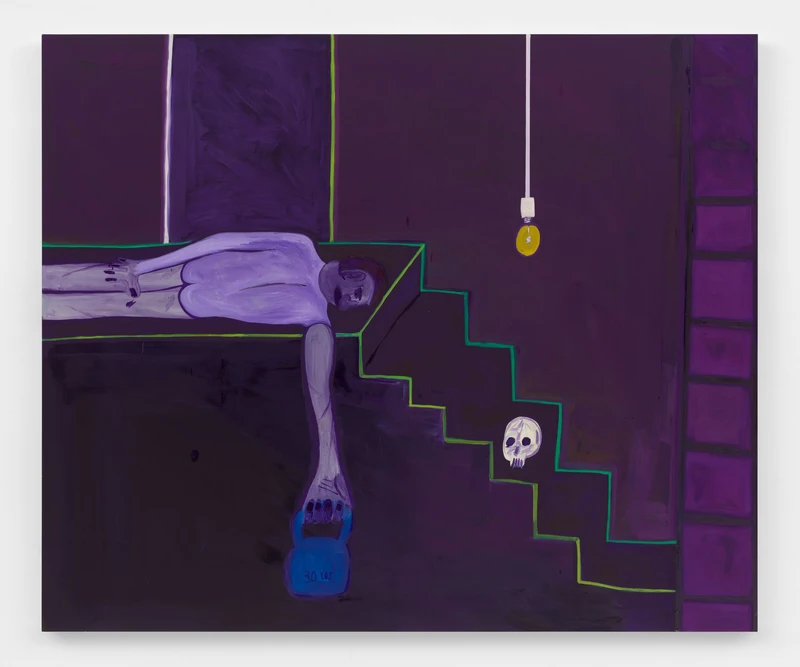Marcus Jahmal: SPIRAL
7 Apr-14 May 2022


Marcus Jahmal (b.1990) lives and works in New York. He was raised in Brooklyn’s Prospect Heights neighborhood, growing up in a family with roots in the West Indies and American south. His paintings synthesize a diverse range of inspirations and autobiography, drawing from photographs, ancient rituals, and personal memories. Jahmal's works move fluidly between genres spanning architectural interiors and still life, as well as landscape and portraiture. Developing his compositions directly upon the surface of each canvas, Jahmal coaxes imaginary, yet uncannily familiar, scenes to life, exploring themes encompassing dreams and folkloric Americana, and the contemporary realities of gentrification and city dwelling.
In Jahmal’s new paintings, the colour purple hurtles along the continuum of human history. The Roman emperors were batty about purple, forbidding their citizens from wearing it under penalty of death. The most prized purple dye came out of Tyre, an ancient city in Phoenicia, literally, “the land of purple,” where it was harvested from a single species of sea snail. Centuries later, Henry Howard, the Earl of Surrey, made the same sartorial miscalculation. Among the evidence presented against him on trial for high treason against Henry VIII was that he had been seen wearing purple. He was beheaded. The Purple Heart is reserved for those who have let blood in combat. It’s the color of the highest price. Purple persists in the mind. It becomes the color of Prince’s oracular vision; of the seditious riffs of Hendrix’s “Purple Haze;” of Raekwon’s “Only Built 4 Cuban Linx…,” a document so important it’s still referred to, as if a secret, by the brash purple of its cassette plastic.
In Jahmal's paintings, the figures that populate his washy fields wear little clothing or nothing at all, a self-abnegating refusal of millenia of class structure. They have become purple itself, their skin pulsating violet, as if emanating light. Jahmal’s color sense is finely tuned, taking something of the rabid passion of the Fauvists and the emotional immediacy of the Neo-Expressionists (there are other overlaps, too: a rejection of three-dimensional space, for example). On the chromatic spectrum, purple exists somewhere between the tempestuous fury of red and the calm cool of blue. It takes both humors and makes its own. Purple vibrates at the uppermost length of the visible spectrum. Travel any further and you’ve left the physical realm.
Marcus Jahmal: SPIRAL' | press release
Download